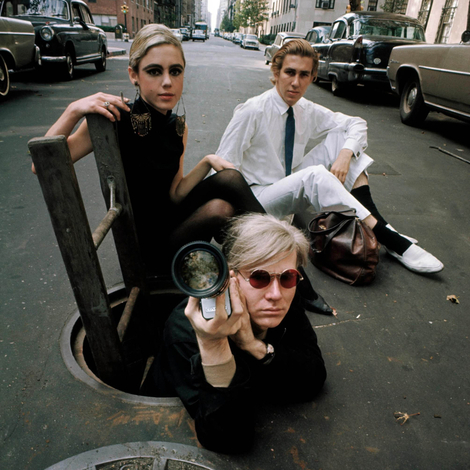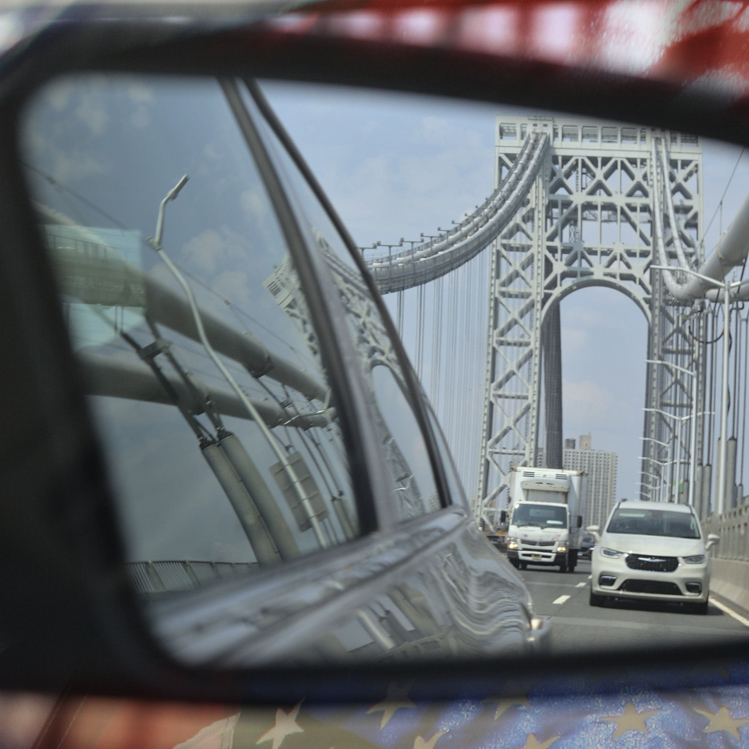The summer after my senior year in college, I drove the entire length of I-95, the highway that stretches from Houlton, a small town on the Canadian border in Maine, to the megalopolis of Miami in the south. I did it in the spirit of exploration, like Ponce de León searching for the fountain of youth or Hernando de Soto investigating rumors of a big river to the west. When we stopped at the beach in Daytona, I felt less like a spring breaker than like the conquistador Vasco Núñez de Balboa wading into the surf with a sword to claim the sea for the Spanish Crown.
I had my friend Jon Potter with me, and his dog, Siegfried. We’d pledged to follow every tangent, track down every amusement park, meet every challenge. Like the heroes of a Bo Diddley song, we promised to best every man and love every woman. That trip has supplied me with a storehouse of episodes I still draw on today.
It’s the girl in Virginia Beach that I remember, the waterslide that nearly killed us in Lumberton, the trooper who gave me a ticket in Georgia—noting my Illinois (“Land of Lincoln”) plates, he said, “What kind of name is Cohen?” I said, “An American name, sir”—the pine forest in North Carolina, the sprawl of industry in New Jersey, the smokestacks that belched flame, the chemical taste, then New York appearing like a chimera, first just the tips of the towers, then the entire skyline, the emerald city seen from a poppy field.
I got my first complete sense of America on that trip, of the East Coast, anyway. What had seemed like a ragtag collection of cities, political jurisdictions, and regional habits became a unified whole, not a song but an album, its mood and message made from a dozen distinct lyrics and melodies. Archaeologists will dig up the highway and study the ruins in thousands of years—the way they currently study Rome’s Appian Way or the Bimini Road sunk beneath more than 10 feet of water in the Caribbean—to understand who we were and what we wanted.
Fury Road
From the start, America’s been a fantasy of endless open highway. The reality is different: flagmen, concrete cloverleafs, crumbling overpasses, drivers gone mad with rage, superannuated road signs that send you in search of nonexistent fast-food joints—a ghost McDonald’s, a phantom Burger King—pavement crews that close half the northbound lanes at rush hour.
Everyone who drives I-95—the entire coastal population of the East Coast, from long-haul truckers to parents bringing kids to college, from bingeing spring breakers to blue-haired old ladies heading south for winter—abhors it. Hatred of I-95 is one of the few things that still binds this great nation together. We hate it because the traffic is maddening, the wrecks are constant, and a rock comes off a garbage truck near the exit, somersaults through the air, and spiderwebs your windshield. And: My God! Is that a baby carriage on the shoulder?

I-95 is used regularly by more than 110 million people. It’s the preferred getaway route for the criminals who work the Boca Raton shopping mall in Florida. It was on I-95 that the comedian Tracy Morgan was severely injured by a Walmart truck outside of Cranbury, New Jersey. For many, it’s the depressing scene of a daily commute. If the suicidal thoughts entertained by those stuck in traffic on I-95 could be made manifest, a toxic cloud—black and roiling, lit now and then by lightning—would hang over it.
But it’s also the closest thing we have to a national Main Street, with every variety of city, town, and state, bluest of the blue and reddest of the red, strung along it like beads. To us here on the dirty side—that’s what truckers call the Atlantic coast—I-95 is what the Mississippi River was to Mark Twain.
Hatred of I-95 is one of the few things that still binds this great nation together.
By starting in Maine, and ending in Miami, it replicates the history of America, from forest primeval to shining metropolis. It covers 1,919 miles, which according to Google would, if you did not stop to eat, sleep, fuel up, or rest, take 28 hours to drive, or 29 days to walk. Most of your time would be spent in Maine (306 miles) and Florida (nearly 400 miles), the latter being where the interstate achieves a gaudy fluorescence amid bail-bond outfits, pawn shops, Waffle Houses, and tattoo parlors.
The southern terminus of I-95 is distinguished by the amount and variety of debris on the road: mattresses, box springs, ladders, wheelbarrows, toilets, and bathtubs. Now and then, drivers have to swerve to avoid a washing machine. The cops once found a complete set of furniture dumped on the side of I-95, which is not that unusual, except that someone took the time to set it up like a living room.
The road services some of the nation’s gloomiest big cities (Philadelphia, Jacksonville), some of its gloomiest midsize cities (Providence, New Haven), and some of its most charming cities (Savannah, St. Augustine). It carries an average of 72,000 cars and 10,000 trucks at any given moment. During rush hour and at the end of long summer weekends, traffic swells to 300,000 cars and 25,000 trucks. According to the Federal Highway Administration, “over 60 percent [of I-95 is usually] under heavy congestion.” That makes I-95 the most dangerous highway in America. Every year, around three hundred people die on it. Its flows are tidal. The flood comes between five p.m. and seven p.m. on weekdays, the ebb between four a.m. and five a.m. on Sundays. At this hour, parts of I-95 are as quiet and serene and unreal as a highway in a dream.

Its creation was proposed as part of President Eisenhower’s National Interstate and Defense Highways Act in 1956. Ike saw the entire highway system as a necessity for a country facing nuclear war. When the bomb got dropped, good roads would be needed to move weapons, food, and soldiers around the country. It’s a road for the apocalypse. Construction began soon after, but it was not officially completed until 2018. As usual, the problem was New Jersey, where, among other stumbling blocks, planners faced wealthy homeowners who did not want their towns turned into super-highway pass-throughs.
In the north, it follows the route taken by George Washington’s army as it fled the British. In the south, it visits much of the Confederacy, notably the capital at Richmond. All told, 15 states are on display, including all of the original thirteen colonies. It spends just one-tenth of a mile in D.C. In and out. Like George Santos. It’s among the few things that unite the rich and the poor. Money will not save you from death, nor from I-95.
The sun does not set on it. Evening simply descends. First it’s day, then it’s night, the headlights of the trucks leaving trails in the gloaming. An astronaut took a nighttime picture of the East Coast from the International Space Station in which the cities and towns are islands of light beside the blackness of the sea. Some of the light is amber, some almost red. A glowing line runs between population centers—that’s I-95. It moves up the coast, banks left at Cape Cod, and heads on north.
Journey’s End
I have a recurring dream. I wake in the middle of the night and get in my car. Something strange has happened. The world has come to an end while I slept. The lights are out on the service roads, the villages empty. There is ash in the air. The horizon is aglow. I drive down Route 7 to I-95. I enter the highway in Norwalk, Connecticut, where a two-car collision recently set a gasoline truck aflame, melting an overpass and closing the northbound lanes. I head south. Mile after mile. Empty cities, dark towns. I’m going 100, 130, 150 miles an hour. There’s no traffic to slow me, nor cop to flag me down. I’m hoping to reach Miami, where I know Jon Potter and Siegfried will be waiting.
Rich Cohen is an Editor at Large at AIR MAIL


